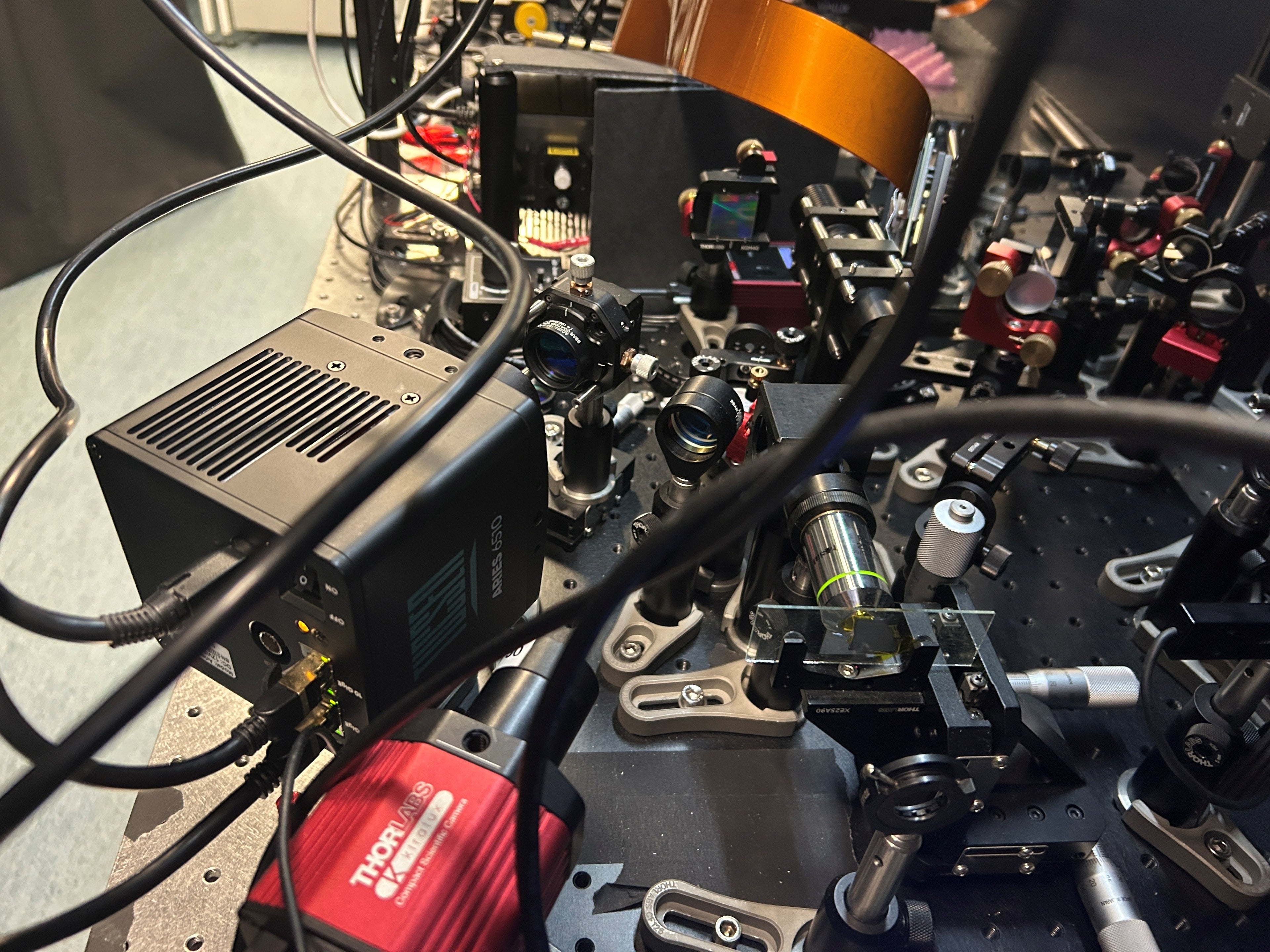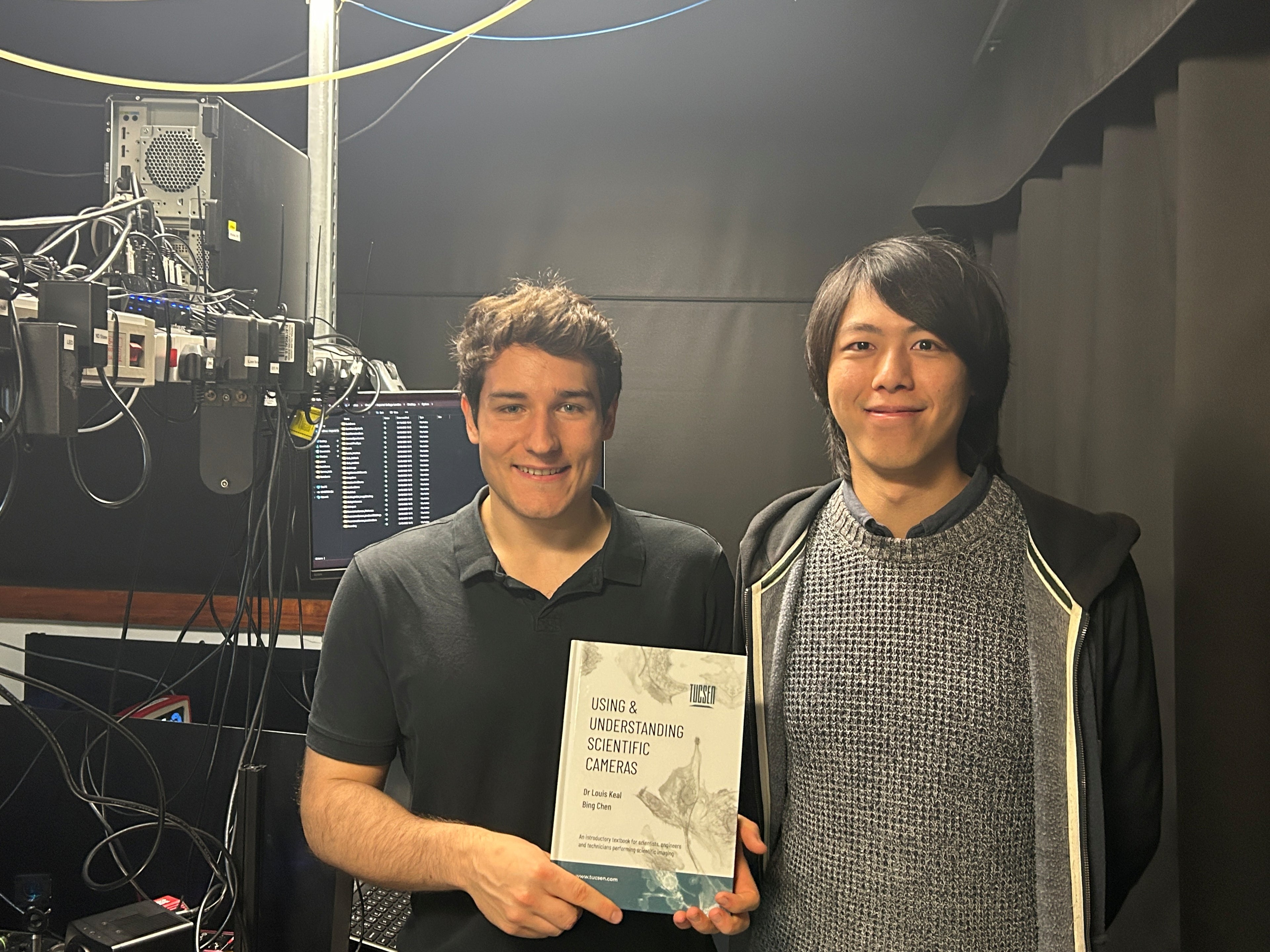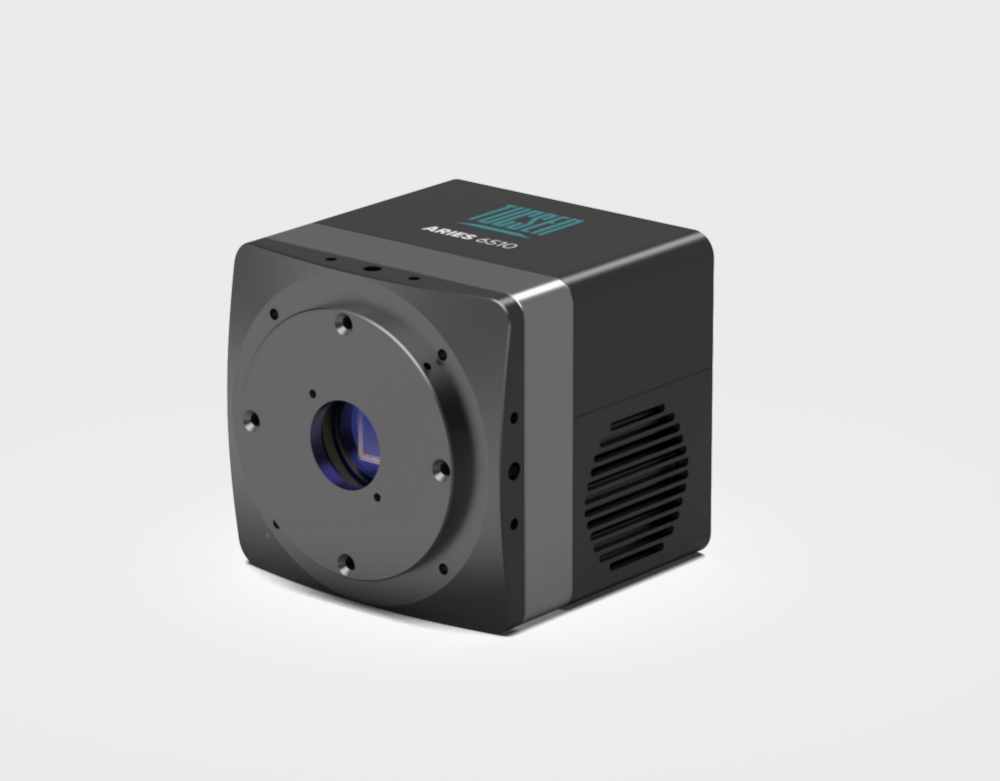
Aries 6510 - Imperial College London
Cameras in Action - Machine Learning with Photonics
"The Aries 6510 delivers the speed, sensitivity, and resolution we required for our machine learning projects, and we have now integrated the camera into our own control application using Python."
- Wai Kit Ng, Sapienza Group, Blackett Labs




Group Research Aims
Artificial intelligence is developing quickly, but current systems use large amounts of energy. To make AI more efficient, the Sapienza Lab at Imperial College London is creating a new kind of optical hardware that processes information using light instead of electricity. Their system uses a tiny patterned semiconductor network to recognise images directly from light patterns. The light interacts in complex ways inside the network, allowing it to perform calculations much like the brain does. This approach could make AI systems faster and far more energy-efficient than today’s computer-based methods, offering a new path toward sustainable and intelligent technologies.

Equipment & Experiment
The current work uses a lithographically patterned indium phosphide (InP) photonic network as a computational substrate, transforming input data encoded in light. Spatially patterned illumination from a digital micromirror device (DMD) is projected onto the network, where scattering, interference, and nonlinear lasing interactions perform computation. The output light is diffracted by a grating and captured by a high-resolution camera, producing data for machine learning analysis. This approach enables direct optical AI computation on raw images while extracting complex structural information from emitted light.
High speed, sensitivity, and resolution are essential to capture the network’s rich optical dynamics efficiently, and the group is developing their own Python-based GUI using the Tucsen SDK called Puzzlepiece.
Images are adapted from those provided by the Sapienza lab.
Experience with Tucsen
"The development of our research was previously limited by the time needed to collect training data from different devices. Working with Tucsen was straightforward: we demoed several cameras, selected the best for field of view and speed, received a same-day quote, and the camera was delivered on time and even installed on-site. The highly sensitive and fast readout of the Aries 6510 enables quicker data collection without sacrificing signal level, and its 16-bit dynamic mode captures finer intensity detail which further improves information quality."
- Wai Kit Ng, Imperial College, Blackett Labs.

